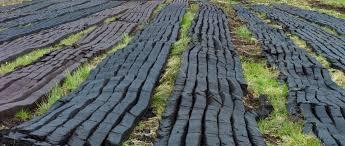
Peat has a multitude of uses. Some of the ecosystem services it offers include:
- Holding more than twenty times its own water weight
- Acting as a carbon store
- Providing somewhere for wildlife to inhabit
- Archaeological preservation
In terms of energy, peat is the first step in coal formation. To fully transform into coal, the substance must be buried by sediment by at least 4-10km.
Due to its low carbon content, peat is not utilised as widely as others for electricity generation; however, it is still used domestically for heating, similar to how coal is used. That said, it is rarely utilised outside of Northern Europe.
Its use in Ireland has been dwindling over the years in lieu of more environmentally friendly forms of energy generation. It is also used in Finland, and Russia is currently planning to increase their use of peat for energy purposes.
What is peat energy?
Peat is the result of generations of partially and fully decayed organic matter. Its substance is dark brown and crumbly. The energy that was created by the decomposing plants during photosynthesis is still held within peat and can be harnessed.
Formation requires vegetation to be buried in a low-oxygen environment. This allows the decaying plant life to incorporate into the soil in layers without fully decomposing.
What is peat used for?
There are four forms and uses of fuel peat:
- Milled peat: This is a granulated form of peat and is generated at scale for use as raw material or within a power station
- Peat pellets: Utilised in farms and areal heating centrals
- Sod peat: Slabs of peat that is cut and dried for domestic use
- Peat Briquettes: Small blocks of highly compressed and dried peat, utilised mainly domestically and sometimes as a coal replacement in older power plants
Is peat energy renewable?
The peat currently being utilised was formed a long time ago; however, it can still be found developing in bogs throughout the globe and is continuing to form.
While some do not believe peat to be a renewable resource due to the extraction rate being higher than the regrowth rate; others consider peat to be a slowly renewable energy, classifying it as a solid fuel rather than a biomass fuel.
The IPCC does not classify peat as either a renewable or non-renewable energy source. Even though it is not considered to be a fossil fuel, the amount of greenhouse gas emissions are comparable.
Use of peat by country
Ireland
Peat energy use, both domestically and industrially, is widespread. Milled peat being utilised within power stations, whereas peat briquettes are sold domestically for heat production. It provides the most annual energy than any other country.
Finland
In Finland, peat is often mixed with wood and burned as part of the heat and electricity production process. It accounts for approximately 6.2% of the country's annual energy production, falling in second position behind Ireland.
Russia
Peat production for energy decreased from more than 40% of the Soviet Union's electric power to 1% in 1980. Plans are in place to increase the contribution of peat for energy generation.
Peat energy advantages and disadvantages
When produced locally, it offers a level of security that can’t be met by other non-locally generated forms of energy. Peat is an excellent way to contribute to the diversified and decentralised energy system.
However, burning peat for electrical purposes releases more carbon dioxide than natural gas and coal. While coal and gas oil release 0.896kh/kWhe and 0.8 CO2 emissions respectively, peat releases 1.105kh/kWhe.
While peat may not be utilised as much as it once was as an energy source, it has multiple uses within agriculture.


















